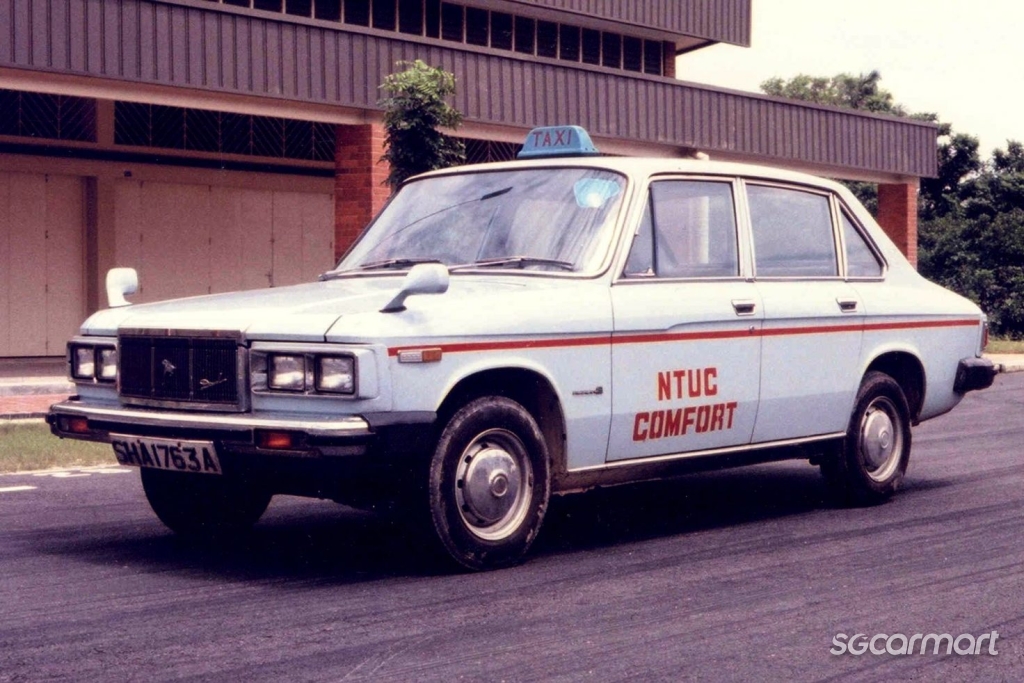The sun will not set on the taxi industry yet. Here's why

What's a commonality between New York taxis and London cabs? Classic images that come immediately to mind. The former adorns a bright yellow orange livery; the latter in a coat of black but which perhaps, is more commonly remembered for its iconic form factor.
Singapore, too, has its own icons in the (some might say, now petering out) taxi scene.
We have ComfortDelGro (CDG) to thank for that. There may be more taxi companies now than there used to, but we can't for certain disregard the almost instantaneous association that CDG conjures when conversations about taxis come up.


The familiar curved bodies we see on our roads today were not how our taxis used to look. They had sharper and straighter edges and sported a more — what we know today as — retro style. Instead of yellow and blue, our taxis mostly took on just shades of blue colour: A reflection of the utilitarian priorities of the past.
The future of taxis is at an inflection point. Beyond cosmetic changes, some very real differences have transpired. We don't see as many taxis plying the streets as we used to. Even if we do, the tops of cabs on the roads no longer flash green for hire; almost all passing cabs these days scream "Busy" or "On Call" in red — an indication that they aren't available for hailing unless pre-booked.

Predictions are rife that taxis are nowhere close to emerging from the doldrums in their race against ride-hailing services. It's looking pessimistic but hope isn't lost. Taxis share a more interdependent relationship with ride-hailing platforms than a scrape-the-surface viewpoint might reveal.
And for as long as this relationship isn't broken, the sun will not set on the taxi industry. Not yet.
Unlike in New York and London, cabs have become a rarity in Singapore. Our experience further runs counter to New York's and London's in that ride-hailing platforms, such as Grab and Gojek, are responsible for our shrinking taxi population.

At the close of 2023, data collected by LTA showed that the total number of taxis on our roads stood at 13,260. This figure was 27,695 exactly a decade ago. Statistically, this constitutes a more than 50 per cent decline in taxis plying our streets.
It would be useful to note, at this point, that the provision of street-hail rides on local grounds are reserved strictly for taxis. These are rides that are flagged down on the streets or hired at taxi stands. Rides ordered through an app, and which involves a predetermined price, on the other hand, are ride-hails.
Interestingly enough, the number of street-hails between 2017 and 2023 bucks the trend of our shrinking taxi population: Instead of decreasing, street-hailing trips have gone up. The average daily number of such trips made was 43,000 in December 2017 as compared to 75,000 at the same point in 2023.

This increase, however, has not come quite as quickly as Singaporeans have taken to ride-hailing services. The first figures reported by LTA on the average number of daily ride-hailing trips completed in December 2021 had already exceeded that of street-hails by over four times (483,000 versus 113,000). Measured during the same period in 2023, the relative gap widened to six-fold: 514,000 versus 75,000.
It's not hard to understand how this came to be. With ride-hailing, passengers can order and wait for their rides from the comfort of their homes, then head down only when the driver has arrived. The convenience that ride-hails bring as a point-to-point service clearly trumps that of street-hails.

In Singapore, unless you hail a cab from a designated taxi stand, there are rules to hiring one that should be observed. For instance, taxis cannot be hailed along bus lanes during their operating hours, and within 9-metres of a bus stop, etc.
Rather than having to remember all of these and searching for a suitable place from which to hail a ride, wouldn't the rushed passenger prefer to fish out their smartphone to book a ride from wherever they are?
Ride-hailing services are also priced differently from street-hails, in a way that gives the consumer greater predictability and transparency. Contrary to the uncertainty inherent in a cruising cab fetching passengers along the street, the demand for ride-hails can be gauged from the number of orders received through its platform.


Fares, as such, can be pegged to levels of demand. This is known as 'dynamic pricing' — prices go up when the demand is high and go down when demand falls.
Street-hailing services charge passengers a metered fare that varies with the distance travelled, alongside applicable surcharge. Put two and two together, and it becomes apparent that ride-hailing gives consumers the added advantage of knowing how much their trip would cost from the get-go.
But as much as fares determined by a dynamic pricing model depend on demand, they are also affected by fluctuations in supply.

In the case of New York City, the droves of drivers who quit Uber and Lyft during the Covid-19 pandemic caused surges in the prices of rides as demand outstripped supply. Similar fare hikes also happen in Singapore during peak hours.
This pricing model — which continuously adjusts according to real-time market demand and supply — works in favour of taxi drivers by helping them to earn rates that are more in keeping with the forces of the free market.
It also cushions drivers from the highs and lows in prices arising from variations in distances, a situation that besets the metered fare model.


Accordingly, street-hailing services may be more cost-effective for passengers but are not the best way to sustain the flagging livelihoods of taxi drivers. Not in the face of the relative stability offered by the flat rates of ride-hailing services.
More and more taxi companies are riding the wave of ride-hails. Apart from GrabTaxi and GoTaxi — the ride-hailing services for taxis via Grab and Gojek — CDG has also developed its bespoke app (CDG Zig) to make it easier for customers to 'hail' its services.
Is the decline in street-hails a bad sign?


The switch from street-hails to ride-hails as the main mode of business for our taxi population today should more appropriately be perceived as drivers adapting to behaviours of tech-savvy consumers. This experience isn't unique to Singapore — it is one that's global.
For the longest time, New York taxis resisted Uber and Lyft because of their competition for the same pool of commuters. In London, the existence of black cabs too, at one point, looked bleak in the presence of fast-growing rivals like Alpha and Uber.
But post-pandemic, the tides have turned. Ride-hailing firms in these major cities now suffer from driver shortage. And taxis are more than well-positioned to plug that crucial void.

Far from driving taxis out of business, ride-hailing platforms afford taxis with an additional means to make money. Just as we have seen the symbiotic relationship between taxis and ride-hailing services be defined and redefined in New York and London with changing times, this same dynamic could pan out here.
One day, these ride-hailing platforms could very well need to rely on taxis to stay afloat.
Ride-hailing platforms need taxis more than they think they do
"A lot of people said these gig economy companies transformed the industry through the use of technology, but what they really did is they created an unrealistic market," said Jason Gross, Vice President, and Head of Mobile at Curb.

On local grounds, ride-hailing has been a hotbed for those keen to leverage the gig economy for supplementary income or to make a living. This has disrupted the way in which point-to-point trips are conducted on the one hand, yet at the same time has created somewhat inflated prices.
The pool of available private hire vehicle (PHV) drivers isn't always constant since not all of them drive full-time. Fortunately, Singapore is helped by our relatively smaller size, which keeps a lid on price surges: People travel shorter distances as compared to in the large cities.
With the normalisation of remote work arrangements post-pandemic, more are commuting shorter distances. Going by metered fares, taxi drivers will have to take on more trips to make up for potential shortfalls in their earnings. This also means that taxi drivers have no incentive to only stick to street-hails to survive.

Maintaining a healthy stream of taxis that ply the streets to pick up flag-down passengers during times of higher demand will help to put a cap on the prices of ride-hailing services.
This follows the simple logic of matching supply with demand. Practically speaking, it also ensures tourists who are less familiar with our roads and not likely to be using the ride-hailing services available locally, are not left stranded.
As long as taxis don't retire, we can trust the forces of the free market to adjust to equilibriums that allow for the coexistence of street- and ride-hails, and that would keep fares reasonable for all. It is also the only way for ride-hailing platforms to stay relevant and endure with time.
ALSO READ: 'Not easy to get a taxi': Flagging a cab is getting harder, but still a 'vital niche'